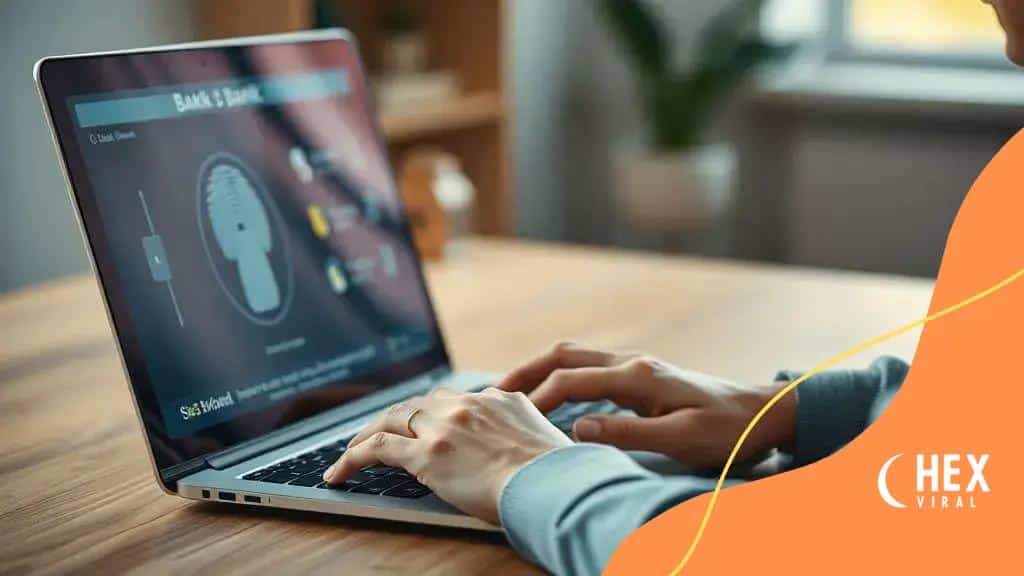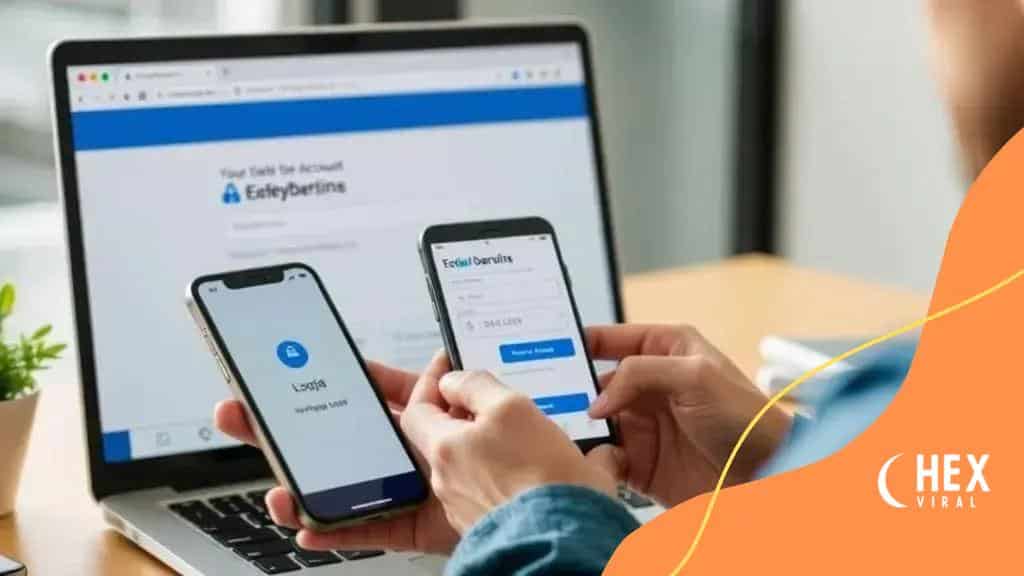Online banking security: protect your money effectively

Online banking security involves using strong passwords, enabling two-factor authentication, recognizing phishing attacks, and promptly reporting any suspicious activity to protect your financial information from fraud.
Online banking security is something we all should pay attention to. Have you ever wondered how safe your online transactions are? Let’s dive into some essential tips to keep your financial information under wraps.
Understanding online banking threats
Understanding the risks associated with online banking is essential for anyone who manages their finances online. As technology advances, so do the methods that fraudsters use. It’s crucial to be aware of these threats to protect your personal and financial information.
Common Online Banking Threats
The digital banking landscape is fraught with various threats. Cybercriminals often employ sophisticated techniques to gain access to your accounts. Here are some of the most common threats:
- Phishing attacks: Scammers send deceptive emails or messages that appear legitimate, tricking users into providing personal information.
- Malware: Malicious software can be installed on your device, allowing hackers to steal sensitive data or credentials without your knowledge.
- Man-in-the-middle attacks: Attackers intercept the communication between you and your bank, capturing sensitive information.
- Weak passwords: Simple or reused passwords can be easily cracked, giving criminals access to your accounts.
As you navigate online banking, be vigilant. Understanding these threats helps in taking proactive measures to safeguard your online transactions. Knowledge is your best defense against fraud. Always prioritize your security by staying informed about the latest scams and tactics.
Recognizing Phishing Attempts
One significant aspect of online banking security is recognizing what a phishing attempt looks like. These attacks can come in various forms, often appearing to be from trusted institutions. Check for signs such as:
- Generic greetings instead of your name.
- Urgent requests for personal information.
- Suspicious URLs that don’t match the bank’s official website.
By being aware of these signs, you can avoid falling victim to fraudulent schemes. Always verify the sender before clicking on links or providing any information.
In conclusion, keeping your online banking secure starts with understanding the threats that exist. By educating yourself about these risks, you take the first steps towards protecting yourself against potential fraud.
Best practices for secure online banking
To enjoy safe online banking, it’s vital to follow certain best practices. These habits help protect your money and personal information from potential threats. Understanding and implementing these measures can significantly enhance your security.
Create Strong Passwords
One of the first steps to secure online banking is creating strong passwords. Your password should be unique and difficult to guess. A strong password typically includes:
- A combination of upper and lower case letters.
- Numbers and special characters.
- A length of at least 12 characters.
Avoid using easily accessible information, such as birthdates or names. Updating your password regularly is also a smart practice to enhance your security.
Enable Two-Factor Authentication
Two-factor authentication (2FA) adds an extra layer of security. By requiring a second form of verification, like a text message or authentication app, 2FA ensures that even if someone knows your password, they cannot easily access your account. Always look for this feature when banking online.
Additionally, be cautious about the devices you use for banking. Avoid using public Wi-Fi networks, as they can be insecure. If you must use a public connection, consider using a virtual private network (VPN) to encrypt your data and improve privacy.
Monitor Your Accounts Regularly
Regularly checking your bank statements and online accounts is crucial. This practice can help you quickly spot any unauthorized transactions or unusual activity. If you notice something suspicious, report it to your bank immediately. Quick action may prevent further issues.
Finally, keep your computer and mobile devices secure. Install antivirus software and keep it updated to protect against malware. Ensure your operating system and apps are also up to date to eliminate any vulnerabilities.
The role of two-factor authentication

Two-factor authentication (2FA) plays a crucial role in enhancing online banking security. This method adds an extra layer of protection, making it harder for unauthorized users to gain access to your accounts. By requiring two forms of verification, 2FA ensures that even if your password is compromised, your account remains secure.
How Two-Factor Authentication Works
When you log into your online banking account, after entering your password, you receive a code on your registered mobile device. This code must be entered to complete the login process. This process confirms that you, and only you, are trying to access your account. Common forms of 2FA include:
- Text messages with a code sent to your phone.
- Authentication apps that generate temporary codes.
- Biometric verification, such as fingerprints or facial recognition.
By implementing 2FA, you significantly reduce the chances of unauthorized access. It’s an essential step for anyone serious about protecting their financial information.
Benefits of Using Two-Factor Authentication
The benefits of using 2FA are numerous. For one, it adds a level of verification that is not easily bypassed. Even if someone gets hold of your password, they still won’t be able to log in without access to the second authentication method. This greatly enhances your security. Additionally, using 2FA can reduce the risk of identity theft, making it less likely that someone can impersonate you online.
Moreover, many banks and financial institutions encourage or even require the use of 2FA for a reason. They understand that the online environment can be risky. When using 2FA, you not only protect your account but also contribute to a safer banking experience for everyone.
Recognizing phishing attacks and scams
Recognizing phishing attacks and scams is critical for ensuring your online banking security. These deceptive tactics aim to steal your personal information and money. Learning how to identify these scams can protect you and your finances.
What is Phishing?
Phishing is a method used by hackers to trick you into revealing sensitive information, such as passwords or credit card numbers. This usually occurs through fake emails or websites that appear to be legitimate. The signs of a phishing attempt can be subtle, so it’s essential to stay vigilant.
Common Signs of Phishing Attempts
Phishing attacks can come in various forms, but they often share some common traits. Here are a few signs to look out for:
- Urgent requests: Messages that create a sense of urgency, pushing you to act quickly.
- Incorrect spelling or grammar: Many phishing emails contain errors that a legitimate company would likely avoid.
- Suspicious links: Hover over any links to see where they lead. If the URL looks strange or unfamiliar, do not click it.
- Unusual greetings: Phishing messages often use generic greetings like “Dear Customer” instead of your name.
By learning these signs, you can reduce the chances of falling victim to a scam. If you suspect a phishing attempt, do not click on links or provide any personal information.
What to Do if You Receive a Phishing Email
If you receive a suspicious email, there are steps you can take. First, report the email to your bank or the company it claims to be from. They can investigate the issue and help protect other customers. It’s also advisable to delete the email without responding.
Furthermore, consider using a spam filter to reduce the chances of receiving phishing emails. Keeping your email addresses private and using unique passwords can also lessen your risk. Overall, staying informed is your best defense against phishing attacks.
What to do if you suspect fraud
If you suspect fraud in your online banking, it’s important to act quickly. Recognizing potential fraud can save you from significant financial loss and stress. Here are the steps you should take immediately to protect yourself and your accounts.
Contact Your Bank
The first thing to do is to contact your bank or financial institution. Use the official phone number or website to avoid potential phishing attempts. Inform them about your concerns so they can investigate the situation and secure your account.
Monitor Your Accounts
Check your bank statements and online transactions closely. Look for any unauthorized charges or suspicious activity. If you find anything unusual, report it to your bank right away. Keeping a close eye on your accounts can help catch fraud early.
- Review recent transactions for unfamiliar items.
- Take note of all suspicious charges to report.
- Change your passwords immediately, especially if you notice suspicious activity.
File a Fraud Report
Filing a fraud report can help protect you. Many banks have a specific process for this. Your report may include details of unauthorized transactions or phishing attempts. This helps the bank investigate and can help prevent future fraud.
In addition, consider reporting the fraud to the Federal Trade Commission (FTC) or your country’s equivalent. They provide resources and support for victims of identity theft and fraud.
Secure Your Information
After you suspect fraud, it’s crucial to secure your personal information. Change passwords not only for your banking accounts but for any accounts linked to your email or phone. Enable two-factor authentication on your accounts, if available, to add an extra layer of security.
Finally, stay aware of any strange emails or offers that seem too good to be true. These could be tactics to acquire more personal information. Always remain cautious with your banking and personal details to avoid falling victim to fraud again.
FAQ – Frequently Asked Questions about Online Banking Security
What should I do if I suspect fraud in my online banking?
If you suspect fraud, contact your bank immediately to report your concerns and secure your account.
How can I recognize a phishing attack?
Look for urgent requests, incorrect spelling, suspicious links, and generic greetings in emails or messages.
Why is two-factor authentication important?
Two-factor authentication adds an extra layer of security by requiring two forms of verification, making it harder for unauthorized users to access your account.
What are some best practices for securing online banking?
Use strong passwords, enable two-factor authentication, regularly monitor your accounts, and be cautious of suspicious emails.






